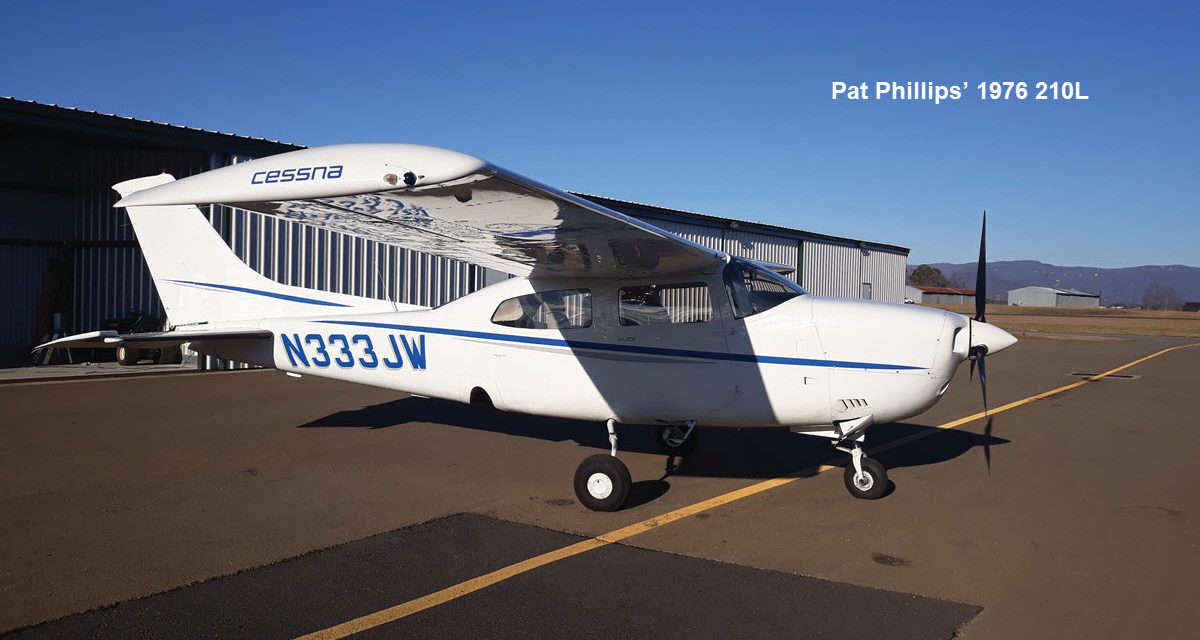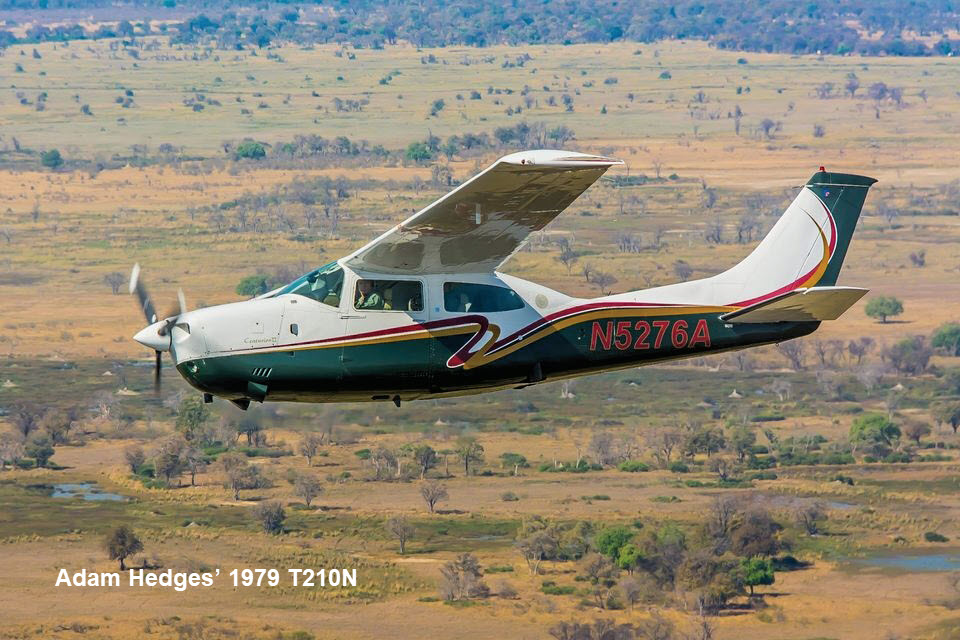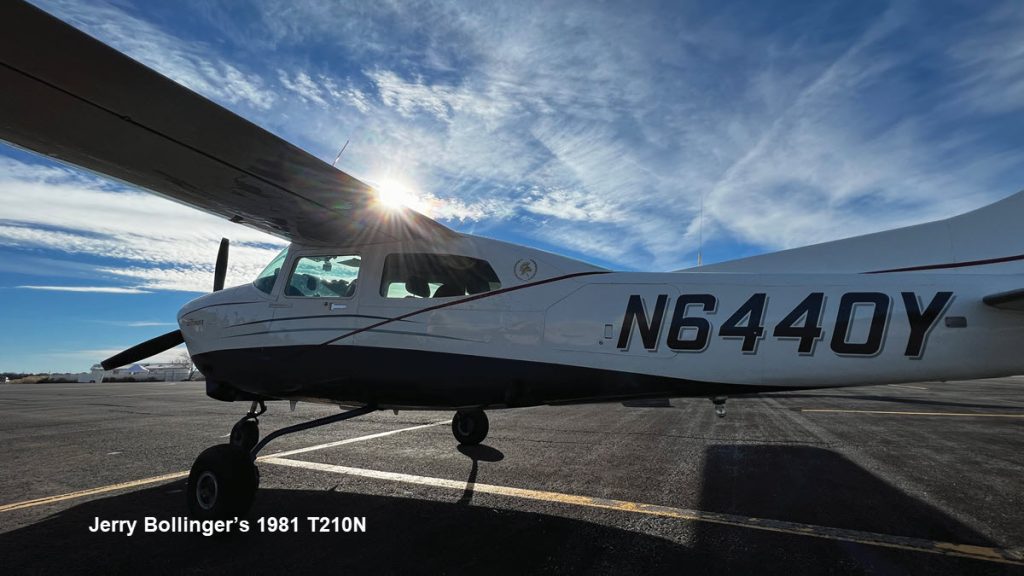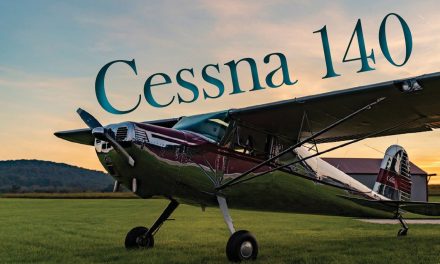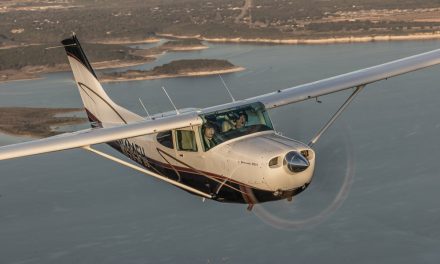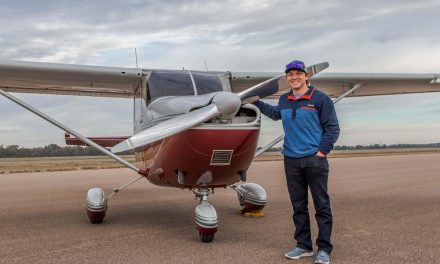By Dan Brownell
The 210 makes its mark in the GA world as a good choice for its speed, six-passenger capacity, relatively high useful load, roominess, and long-distance capability. All in all, it’s a great value for those who are looking for these flight characteristics. Of course, there is a corresponding cost associated with these benefits, including higher fuel use and higher maintenance costs because of the retractable landing gear and wing spar inspections.
Reviews and Tips from COO Members
Pre-Purchase Tips
Dan Nelson, Boring, Oregon, 1978 T210M
- Have someone who knows T210s do a pre-purchase inspection.
- Look for complete and consecutive logbooks.
- Wing spar AD must be done and passed inspection.
Douglas Wattoff, Monclova, Ohio, 1981 P210N
- Have the pressurized experience for insurance.
- Look for aircraft with the Vitatoe IO-550 STC.
- Known ice certification is important.
Jerry Bollinger, Salt Lake City, Utah, 1981 T210N
- Wing spar. If it has 4,000 hours or more, it needs an eddy current inspection.
- Make sure the hydraulic pump for the landing gear is turning off at the completion of the gear cycle.
- Make sure it is equipped with the avionics you want, especially GPS navigation and autopilot. Avionics upgrades after you buy are nice but pricey.
Matthew Stoll, Portland, Oregon, 1979 P210N
- Pull the trigger on a hull you’re comfortable with. Great versatile aircraft. I love the pressure. It’s immensely better for preventing fatigue. As an airline pilot, I know. Yes, it climbs a bit slower, but who cares? It’s your physiology and mental clarity at stake.
- Have a top-notch engine monitor. I installed a JPI EDM 930 and it’s key. I would never fly without one. I do fly LOP and got GAMI injectors also. Wow, does it fly cooler cylinder head temperatures (CHTs) at half the fuel.
- Remove the middle seats. I don’t subscribe to fit the model to the flying. I’m a bigger dude. I like the high wing, the space, and less weight. I fly it mostly solo, and I love it. Life is short. Why aren’t they making new 210s?
Pat Phillips, Cumming, Georgia, 1976 210L
- Be sure the wing spar AD has been properly complied with!
- Do a thorough check of the gear system (including the emergency hand pump).
- Check that the alternator and battery have been well-maintained.
Ricardo Diaz, Miami, Florida, 1978 T210M
- Don’t disregard the 210 if it has had a gear-up landing. It’s not a catastrophic event.
- Make sure the wing spar AD has been properly complied with.
- Definitely install a full engine monitor. The TSIO-520
William Gust, Monument, Colorado, 1978 T210M
- Research the required maintenance requirements.
- Have a complete pre-buy completed by an IA who is knowledgeable about the 210.
- Know your needs, and make sure the 210 will fill them.
Ed Fang, Williamsburg, Virginia, 1982 P210N
- Make sure you can get insurance in the P210. Many insurance companies are requiring current instrument to be insured in it.
- Get a good pre-buy. People familiar with 210s are getting rarer and rarer. I believe the three best known are Paul New, John Effinger, and John Wingfield.
- Take Chuck McGills’ ground school and read his book. It has excellent information about flying the 210.
- Take either of Paul New’s courses on the 210. He knows more about the inside of the 210s than you’ll ever wish to know.
Pre-Purchase Checklist
We asked owners for pre-purchase ideas that most people wouldn’t think of.
Dan Nelson, Boring, Oregon, 1978 T210M
Wing spar AD complied with.
Matt Ormand, Silver City, New Mexico, 1978 T210M and 1979 210N
These 45-year-old airframes need to be thoroughly checked for corrosion as well as poorly maintained engine and exhaust systems.
Matthew Stoll, Portland, Oregon, 1979 P210N
My plane was as clean as a whistle, but it’s a P210. I’d look for corrosion all around. If the oil samples are good historically, I’d say that’s a plus. You can’t check everything, so go with your gut and a good due-diligence and get the plane. Lots will show up after. Just be ready for Murphy’s Law.
Pat Phillips, Cumming, Georgia, 1976 210L
If it has an old Navomatic autopilot, don’t write it off as junk. Be sure you test it out during a test flight, though.
Ricardo Diaz, Miami, Florida, 1978 T210M
Autopilot operation and yoke-mounted trim switch.
William Gust, Monument, Colorado, 1978 T210M
Ensure all ADs have been complied with.
Ed Fang, Williamsburg, Virginia, 1982 P210N
Have engine valves and lifters checked by someone familiar with a borescope.
How Does the 210 Compare?
Dan Nelson, Boring, Oregon, 1978 T210M
T210 vs. T182RG
Both fly pretty fast. The 210 has a proven engine that’s easy to get parts for and has dual drive mags.
The T182 has a single drive for two mags. Lycoming doesn’t support this particular TO-540. Parts will become harder to get.
Douglas Wattoff, Monclova, Ohio, 1981 P210N
P210N (with Vitatoe STC) vs. Baron G58
The P210N is a great airplane in the mid-teens with a cabin altitude of 5,000 and speeds around 190 true at 17 gph. The Baron is better for six passengers and luggage, but the P210N is less expensive to operate and far more comfortable for long-range flights.
Jerry Bollinger, Salt Lake City, Utah, 1981 T210N
210 vs. 206
The 210 and 206 are pretty close to the same bird other than the landing gear. It’s nice having the added speed and economy of the 210. I did lose baggage space because of the wheel well, but the faster plane is still the winner for me.
Matt Ormand, Silver City, New Mexico, 1978 T210M and 1979 210N
210 vs. 36 series Bonanza
The 210 exceeds the Bonanza in every category except cruise speed.
Matthew Stoll, Portland, Oregon, 1979 P210N
210 vs. Bonanzas and Others
High wing is vastly superior in all aspects of flight. It’s excellent for sightseeing, comfort, and this plane really does carry six people. Useful load is an unmatched bonus. Yes, you may get more speed elsewhere, although my A&P says my 210 is faster than all the Bonanzas he works on. I don’t know if that’s right, but I’ll take his word for it, and anyway, I don’t care.
Pat Phillips, Cumming, Georgia, 1976 210L
210 vs. older Mooney
The 210 is more comfortable, carries a lot more, and is a good bit faster. It’s an awesome traveler!
Ricardo Diaz, Miami, Florida, 1978 T210M
T210 vs. 172
The T210 is much faster, carries five passengers, and can fly very high. But it’s a complex high-performance aircraft, costlier to operate, and much costlier to maintain. The 172 is slower but much more forgiving, and much cheaper to operate and maintain.
William Gust, Monument, Colorado, 1978 T210M
210 vs. 182 and 182RG
I have owned a 182 and 182RG. Both are great planes, especially the fixed-gear version. I have owned and flown a T210 for 27 years. The 210 has a higher service ceiling, a higher useful load, roomier doors and cabin, and higher true airspeed (TAS) for about the same fuel burn. It can get above most weather and is a stable IFR platform.
Ed Fang, Williamsburg, Virginia, 1982 P210N
210 vs. 182/182RG and 206
The 210 is significantly smoother and more stable to fly. It has the same interior space as a 206, but the P210 is quieter and a joy to fly.
What should always be upgraded/ restored on a used 210?
Dan Nelson, Boring, Oregon, 1978 T210M
Radio navigation upgrades. Good working autopilot. Engine components. Most people who would buy a 210 will fly it IFR. Make sure all systems work.
Douglas Wattoff, Monclova, Ohio, 1981 P210N
Including the Vitatoe IO-550 engine conversion is a game changer. The P210N or P210R becomes a true business aircraft. Include speed brakes and an auxiliary fuel tank, and this airplane will give you nearly 1,000 nm at speeds of around 90 true at 16,000 feet, burning around 16 gph. The performance is better than a Baron but not as good as a turboprop. The biggest difference between this combination of options and a turboprop is the operating costs and the attention required in engine management on the P210N. It’s truly the poor man’s turboprop, which is saying a lot for a P210N.
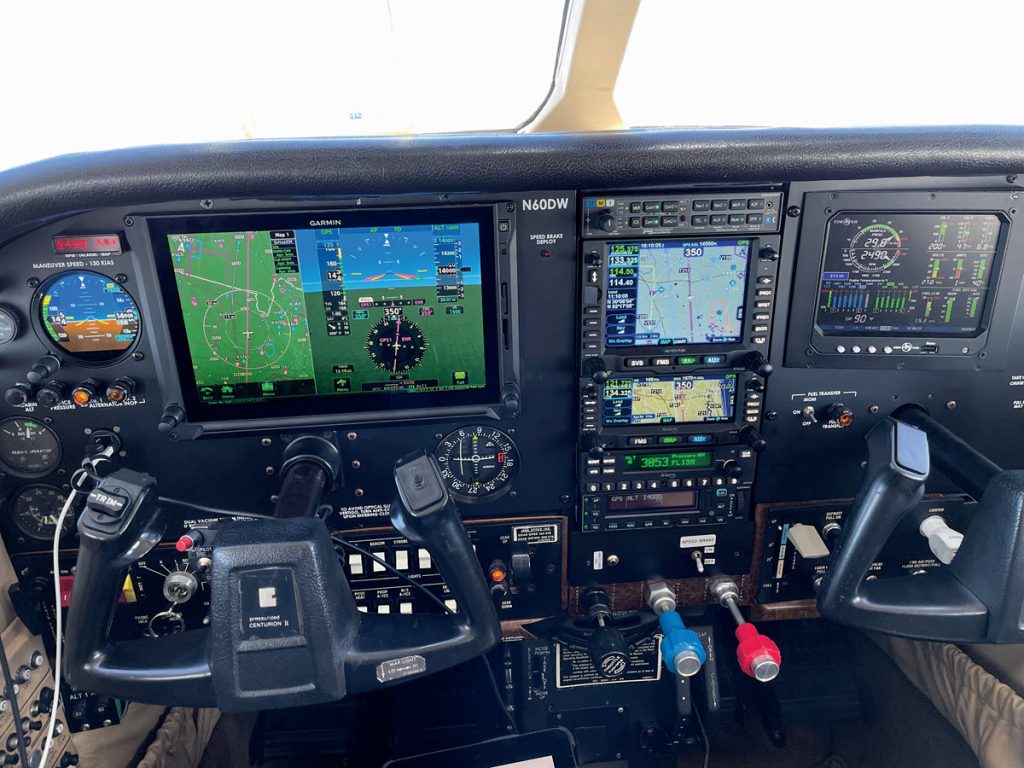

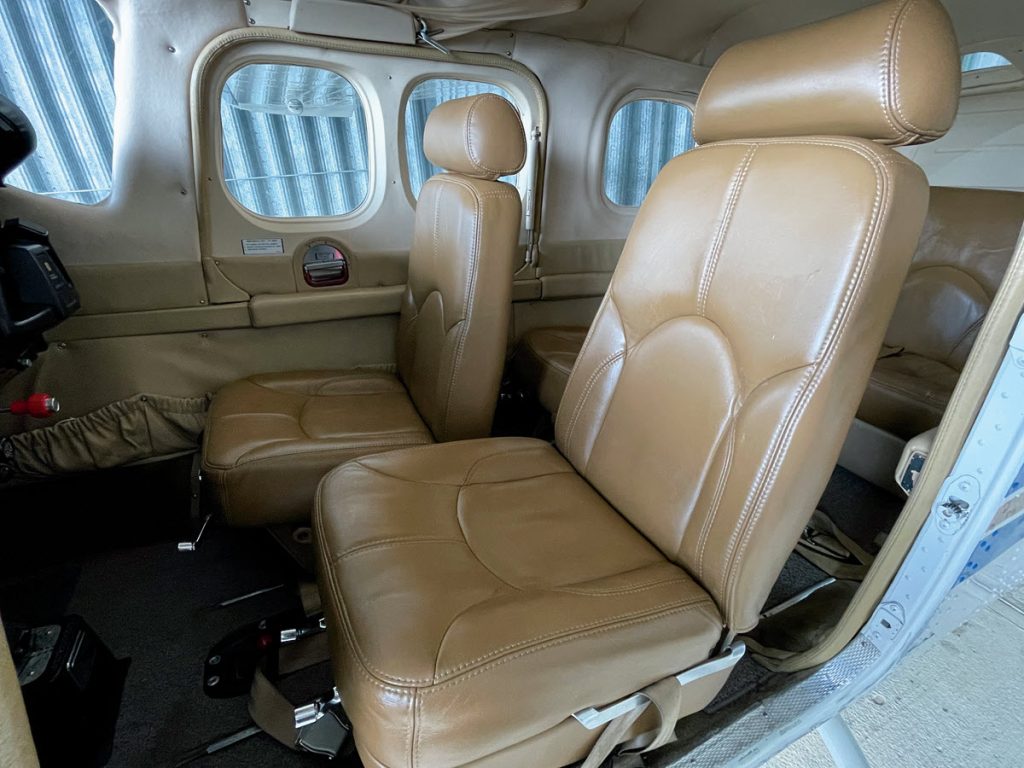

Matthew Stoll, Portland, Oregon, 1979 P210N
Get a JPI 930 EDM. You must have the newest model, in my opinion. Dumping the vacuum system is next, but it’s expensive to do it right. I’d prefer GTN 750 with digital setup vs. two Garmin 275s, but money talks.
Pat Phillips, Cumming, Georgia, 1976 210L
The old engine instruments are not very reliable, and it’s very important to keep tabs on the IO-520. A good modern engine analyzer is a must.
Ricardo Diaz, Miami, Florida, 1978 T210M
The gas caps (“killer caps”) and all the fuel and oil hoses forward of the firewall.
William Gust, Monument, Colorado, 1978 T210M
The avionics. Ensure that the landing gear is properly maintained.
What is the best reason to buy and/or fly this aircraft?
Adam Hedges, Botswana, 1979 T210N
- Versatility and stability.
- Long distance capability and good bush plane.
- Load capacity.
Dan Nelson, Boring, Oregon, 1978 T210M
I have flown the T210 in all lower 48 states. I can go from the West Coast to the East Coast in 14 hours’ flying time. It’s a very good IFR platform, can fly high if necessary, and has a good useful load.
Douglas Wattoff, Monclova, Ohio, 1981 P210N
This airplane is not for everyone, and I would not recommend it without the Vitatoe IO-550 STC. The standard IO-520 is underpowered, with significant CHT overheating issues. If you need a business aircraft and can manage a gas piston, this is the best value in the market for an aircraft capable of flying over most winter weather without wearing oxygen. The lower cabin pressure has you arriving more refreshed than a non-pressurized aircraft.
Jerry Bollinger, Salt Lake City, Utah, 1981 T210N
It is a fast plane for six passengers, with a 950-pound useful load, even with a full 90 gallons.
Matt Ormand, Silver City, New Mexico, 1978 T210M and 1979 210N
It’s a good load hauler, has good takeoff and landing performance, and handles turbulence and crossword landings very well. It also has great visibility with a high wing.
Matthew Stoll, Portland, Oregon, 1979 P210N
Everything. It gets it done. It’s been reliable and I fly it a lot. LOP has changed the game with the recent spike in fuel. Oil changes at 25-30 hours. I hope to go far past overhaul per Mike Busch’s articles and my JPI data.
Pat Phillips, Cumming, Georgia, 1976 210L
This is a great travel plane. You can actually fill all six seats, take a few bags, and put three to four hours’ worth of fuel in it. The weight and balance envelope is very generous, unlike a Bonanza.
Ricardo Diaz, Miami, Florida, 1978 T210M
Speed, payload, and the pleasure of flying it.
William Gust, Monument, Colorado, 1978 T210M
The T210 flies high, fast, is very comfortable, and has a good useful load.
Ed Fang, Williamsburg, Virginia, 1982 P210N
It’s the king of singles. It’s fast, comfortable, and accomplishes 90% of most missions.
What is the state of the used market for 210s?
Dan Nelson, Boring, Oregon, 1978 T210M
It appears to be good. I have owned mine since 1988. I paid $67,000 for it then. It looks like it’s now worth about three to four times what I paid for it.
Douglas Wattoff, Monclova, Ohio, 1981 P210N
The used market is flat other than those aircraft with good avionics and the Vitatoe engine. Aircraft with A/C are at a premium, but make sure you have a known ice aircraft. You’ll need it as you climb to higher altitudes.
Jerry Bollinger, Salt Lake City, Utah, 1981 T210N
A good low-time plane with no accident history is rare and hard to find. When there is one, it sells fast.
Matt Ormand, Silver City, New Mexico, 1978 T210M and 1979 210N
The value is up, as with all aircraft with good qualities. But it has been unjustly escalated on the insurance market. Older 210s should be excluded from the category of the newer 210 insurance market, as these two insurable markets should be separated. Transitional training is a must in this aircraft and should be done by a highly qualified Cessna 210 instructor. Most of the recent accidents are the fault of low-time, poorly trained pilots.
Matthew Stoll, Portland, Oregon, 1979 P210N
I can’t say for sure, but it seems like it has risen until now. I’d say we are in for a decline with higher interest rates and insurance rates being a real problem across GA.
Pat Phillips, Cumming, Georgia, 1976 210L
I bought my plane in January 2021, just as prices were starting to go up. I think I will be adding about $40,000 to my hull value when I renew my insurance next year.
Ricardo Diaz, Miami, Florida, 1978 T210M
Pricing has been exponentially increasing since 2018.
William Gust, Monument, Colorado, 1978 T210M
Old 210s are typically below $100,000. 1979 and newer can go as high as $375,000.
Ed Fang, Williamsburg, Virginia, 1982 P210N
It’s holding decently steady. It would probably be significantly higher, but lack of ability to get insurance is probably holding the market in check.
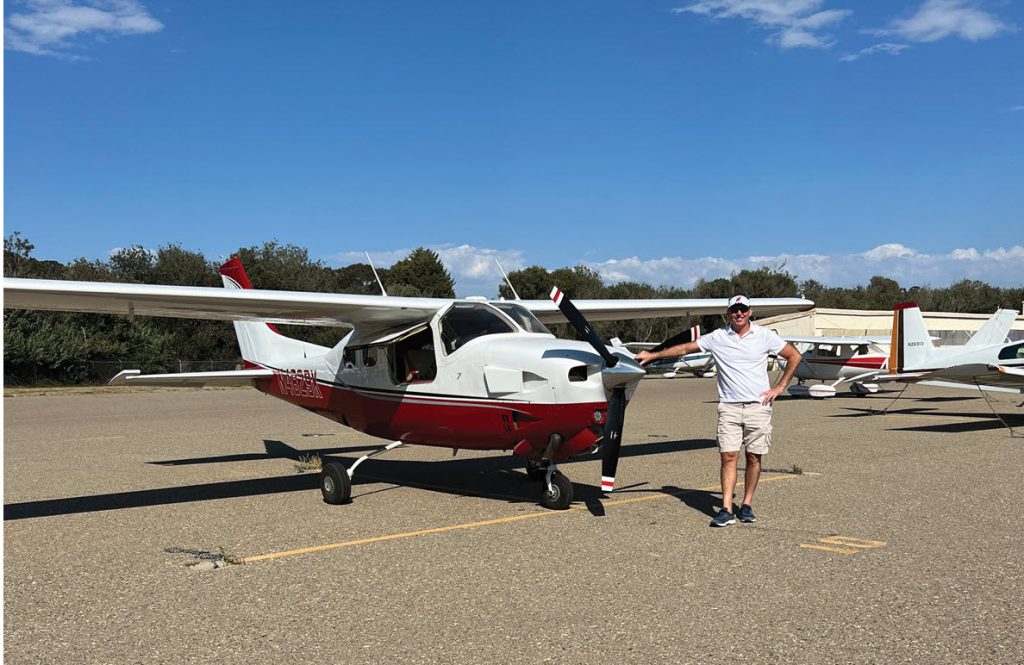
Miscellaneous Tips
Dan Nelson, Boring, Oregon, 1978 T210M
210s fly fast and carry lots of weight but burn 20 gph. The engine will easily go to TBO if flown correctly. You’ll need an instructor who knows turbocharged engines and how to manage them. Cylinders can be a problem if the engine is not managed correctly. I have over 3,000 hours on three different TSIO-520s and never had a cylinder problem.
Douglas Wattoff, Monclova, Ohio, 1981 P210N
I purchased this aircraft to resell. Once I started flying it, I found myself using it more and more for business. I upgraded with the Garmin autopilot and G500 Txi panel, making this an amazing aircraft.
Jerry Bollinger, Salt Lake City, Utah, 1981 T210N
The 1986 210R was the last 210 built, so replacement parts are sometimes hard to find and can be pricey.
Matt Ormand, Silver City, New Mexico, 1978 T210M and 1979 210N
Buy an L, M, N, or R model. Keep the gear system well-maintained. Thorough, high-quality engine management techniques are a must for these large-bore Continentals. A correctly run one will go to TBO without having to change a cylinder because it was mismanaged. The only reason to replace one should be a manufacturing flaw. Some parts are becoming expensive and scarce, especially for the R model.
Matthew Stoll, Portland, Oregon, 1979 P210N
If I were Cessna, I’d build this plane brand-new out of composite and start selling it again with an updated power plant. I love this thing. I can’t fly it enough. I considered Malibu and A36, but I’m glad I ended up here.
Pat Phillips, Cumming, Georgia, 1976 210L
The 210 flies like a 182, only bigger and heavier. Several hours of transition training with an experienced CFI is very important.
Ricardo Diaz, Miami, Florida, 1978 T210M
It’s OK to buy one with the original landing-gear doors; you don’t need the Uvalde gear mod. The landing-gear doors operate well as long as they’re properly inspected and taken care of.

